US economy: money trends / stocks cycle still signalling weakness
Posts here from the summer suggested that US economic growth would fall short of consensus expectations because 1) real (i.e. inflation-adjusted) narrow money had slowed sharply, 2) corporate finances had deteriorated and 3) the inventory cycle was turning down. GDP is currently estimated to have risen by only 0.7% annualised in the fourth quarter, reflecting falls in business fixed investment, stockbuilding and net exports.
The above-mentioned three reasons for pessimism remain in place. The six-month change in real narrow money has recovered from close to zero in October but is still low by recent and international standards – see first chart*.
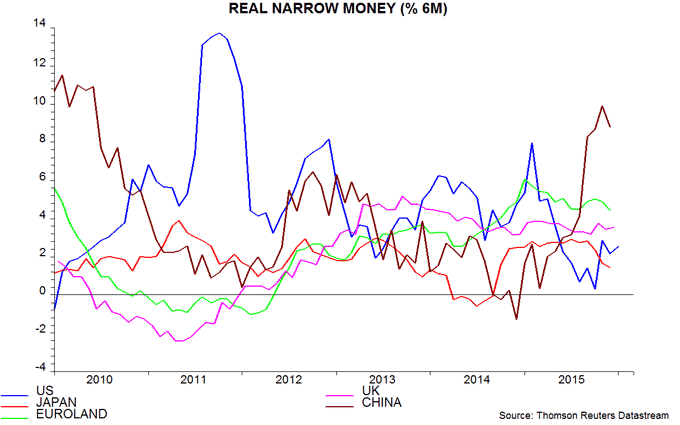
The “financing gap” of non-financial corporations (i.e. the difference between their capital spending and retained earnings) fell back between the second and third quarters, although a wider net borrowing measure including share purchases remained high – second chart**. The gap may have narrowed further in the final quarter as fixed investment and stockbuilding declined. This “good news”, however, is probably outweighed by a rise in bond market financing costs: the yield on the Merrill Lynch high yield index, excluding energy sector bonds, increased by 150 basis points between the third quarter and January.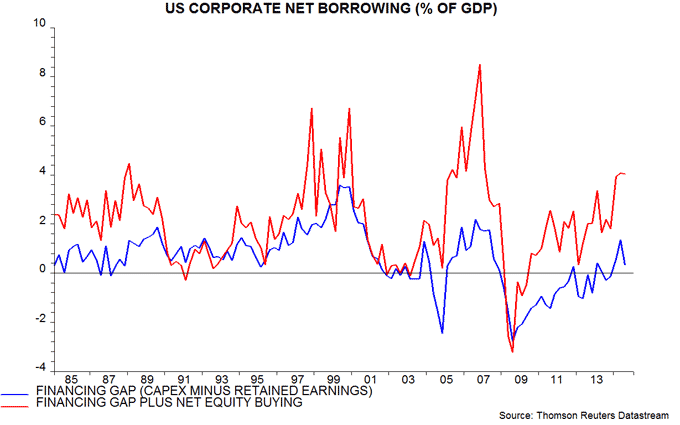
Stockbuilding, meanwhile, remained significant – equivalent to 0.4% of GDP – last quarter. With final demand slowing, the inventories / sales ratio in the GDP accounts rose to its highest level since 2011 – third chart. The stocks cycle, therefore, may continue to exert a sizeable drag in the first half of 2016.
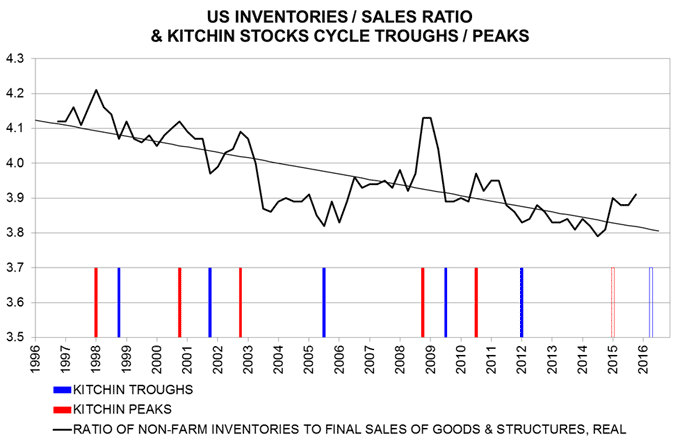
The labour market is unlikely to be immune to these trends. Productivity fell in the fourth quarter, boosting unit labour costs and increasing pressure on firms to cut jobs. Several indicators are flashing warnings: the American Staffing Association staffing index – which measures demand for temporary and contract workers – has fallen year-on-year for eight months, the four-week moving average of initial jobless claims is up 9% from its recent low, while the employment component of the ISM manufacturing survey dropped to its weakest level since 2009 last month.
The risk is that a softer labour market causes consumers to retrench, tipping the economy over into a recession. For this reason, a previous post suggested paying close attention to consumer expectations in the Conference Board and University of Michigan surveys – expectations usually fall sharply at the onset of recessions. The Conference Board measure rose in January, with Michigan expectations unchanged – fourth chart. Consumers may have adjusted, at least partially, to a weaker outlook, with the personal saving ratio rising to a three-year high in December.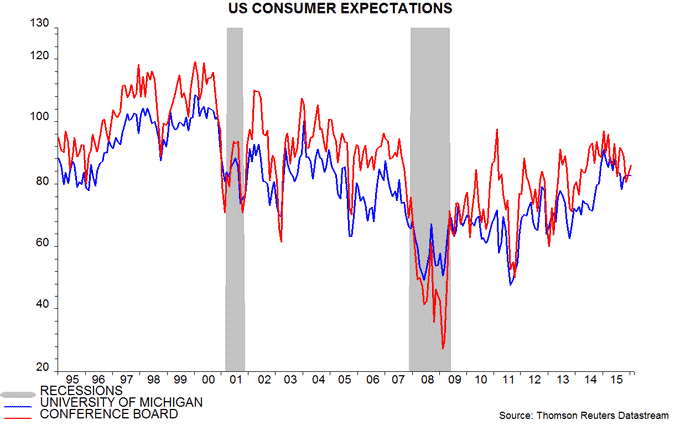
In addition to a sharp drop in consumer expectations, the previous post suggested that a recession would be signalled by a fall in the ISM manufacturing new orders index below 42.5 and / or a rise in the net percentage of banks tightening credit standards on commercial and industrial (C&I) loans in the Fed’s senior loan officer (SLO) survey above 20%***. The ISM orders index edged up to 51.5 in January, although regional Fed surveys were more negative – fifth chart. The net tightening percentage in the SLO survey, meanwhile, increased to 6% – final chart.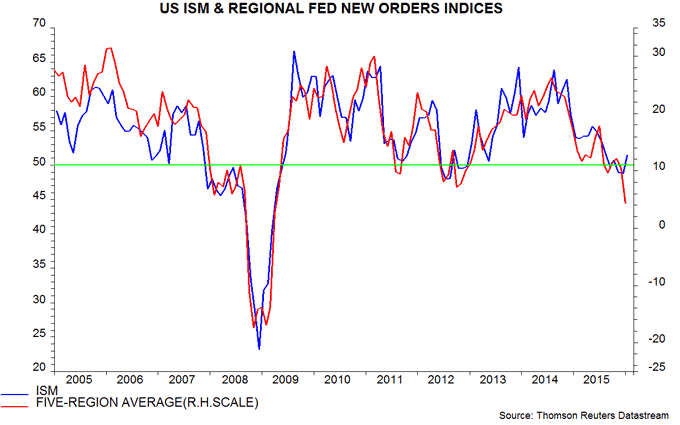
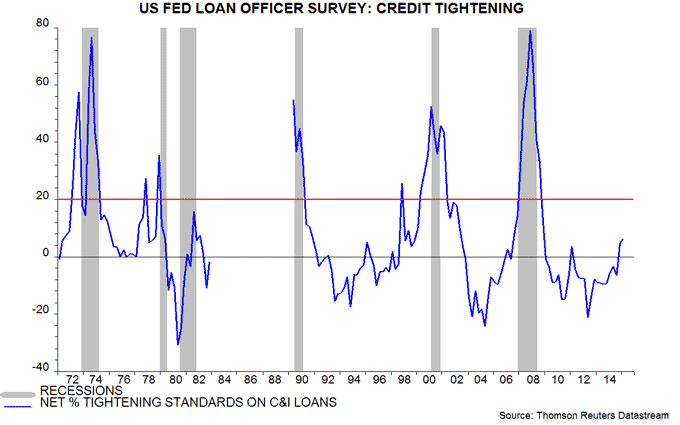
*The chart includes a US January estimate based on money data for the first three weeks and an assumed 0.2% monthly fall in consumer prices.
**A post in December stated that the wider measure had declined sharply in the third quarter but this reflected an error in the official data, which has since been corrected.
***Average of large / medium and small firm net percentages.

Reader Comments